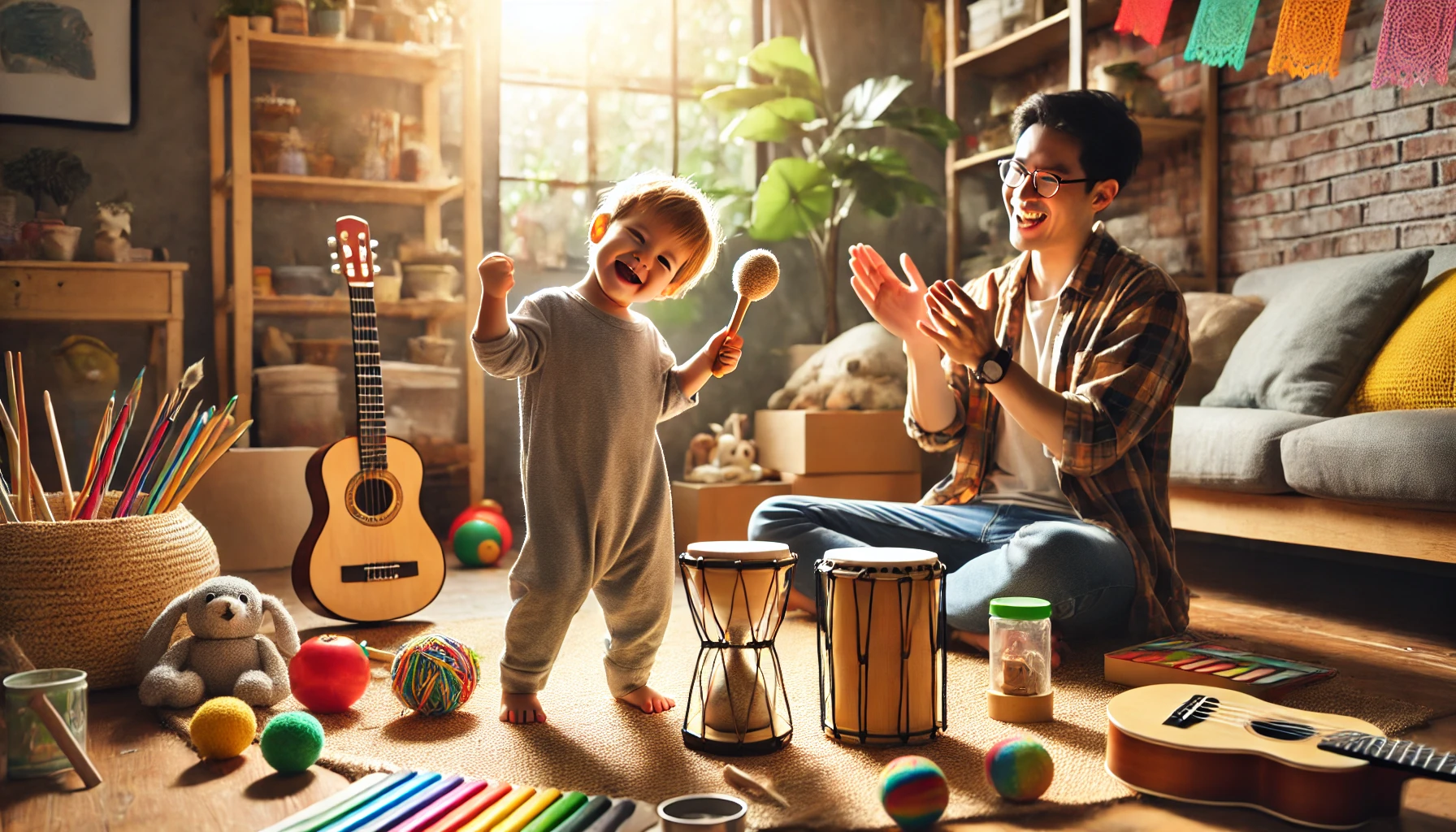Music is much more than entertainment for young children — it’s a powerful tool for emotional expression, cognitive development, and social connection. Whether through rhythm, melody, or movement, musical play can awaken a child’s curiosity, boost brain function, and bring joy into everyday routines.
In this article, you’ll discover how music supports child development and explore fun, simple musical activities to try at home.
How Music Supports Child Development
Music stimulates multiple areas of the brain at once, making it a holistic and engaging way for children to grow. Here are some of the developmental areas it enhances:
1. Language and Communication
- Helps with rhythm and speech patterns
- Improves listening and comprehension
- Builds vocabulary through lyrics
2. Cognitive Development
- Supports memory, attention, and sequencing
- Encourages problem-solving through patterns and repetition
3. Motor Skills
- Promotes coordination and timing (especially with instruments or movement)
- Strengthens fine and gross motor control through dance and clapping
4. Emotional and Social Skills
- Provides a healthy outlet for emotions
- Encourages group interaction and cooperation
- Builds self-confidence through self-expression
Music also brings bonding moments between parent and child — a connection that lasts beyond the song.
Easy Musical Play Ideas for Home
You don’t need to be a musician or have fancy instruments. These activities are simple, fun, and incredibly effective.
1. Homemade Instruments
Create your own music kit using everyday items:
- Shakers: Fill plastic bottles with rice or beans
- Drums: Use pots, pans, and wooden spoons
- Tambourines: Tie bells onto paper plates or elastic bands
- Guitar: Stretch rubber bands over a box
Let your child explore the different sounds. Name the instruments together and play along with music.
2. Sing Together — Anytime, Anywhere
Singing helps children with:
- Word recognition
- Memory and rhythm
- Emotional regulation
Start with familiar songs like:
- Twinkle, Twinkle Little Star
- Old MacDonald Had a Farm
- If You’re Happy and You Know It
Make it personal! Replace lyrics with your child’s name or objects around the house.
3. Freeze Dance
Play a song and dance around the room. Pause the music randomly — when it stops, everyone freezes!
This game teaches:
- Listening
- Self-control
- Motor planning
You can add challenges like “freeze like a statue” or “freeze on one leg” to make it more fun.
4. Rhythm Copycat
Clap a rhythm and ask your child to repeat it. Start simple and make it gradually more complex.
Try with:
- Claps
- Taps on a table
- Stomps on the floor
This strengthens auditory memory, concentration, and coordination.
5. Musical Storytelling
Tell a story with musical sound effects. Use instruments or household items to represent actions or emotions:
- Shaking rice for rain
- Drumming for a thunderstorm
- Soft humming for bedtime scenes
Encourage your child to add their own sounds and take turns narrating.
6. Emotion Songs
Music is a gentle way to talk about feelings. Try singing about different emotions:
- “When I’m happy, I clap my hands…”
- “When I’m sad, I give a hug…”
Use facial expressions, hand gestures, and changes in tone to reinforce meaning.
Ask your child:
- “What does a happy song sound like?”
- “Can we make a sleepy song together?”
This builds emotional intelligence in a playful, safe way.
7. Musical Chairs (Gentle Version)
Set up pillows or cushions in a circle. Walk or dance around them while the music plays. When the music stops, sit on the nearest one — no one is left out.
This version removes the pressure and keeps the fun inclusive, especially for younger kids.
8. Explore Sounds in Nature
Go outside and listen for:
- Birds singing
- Leaves rustling
- Water dripping
- Dogs barking
Bring a small drum or shaker and play along. Ask:
- “What does the wind sound like?”
- “Can we make music with what we hear?”
Nature becomes your outdoor concert hall.
9. Daily Routine Songs
Turn transitions into music moments:
- Clean-up song
- Brushing teeth tune
- Getting dressed dance
Consistency with these songs helps kids anticipate what’s next and creates a sense of rhythm to the day.
10. Make a Family Band
Invite siblings, parents, or stuffed animals to form a band. Assign roles (singer, drummer, dancer) and perform together.
Let your child be the “conductor” and lead everyone. You can even record the performance and replay it later.
Tips for Using Music at Home
- No need for perfection. Off-key singing and improvised instruments are perfect!
- Follow your child’s interests. Do they love animals? Make animal sound songs!
- Repeat often. Repetition builds memory and confidence.
- Encourage movement. Combine music with dance, jumping, or stretching.
- Use music for transitions. It helps children shift activities more smoothly.
Final Thoughts: Let the Music Flow
Music is more than just sound — it’s a bridge to learning, bonding, and emotional growth. By weaving musical play into your child’s daily life, you create joyful memories while nurturing essential skills.
So sing out loud, shake those homemade maracas, and dance like no one’s watching. Every musical moment is a gift that helps your child grow — inside and out.
